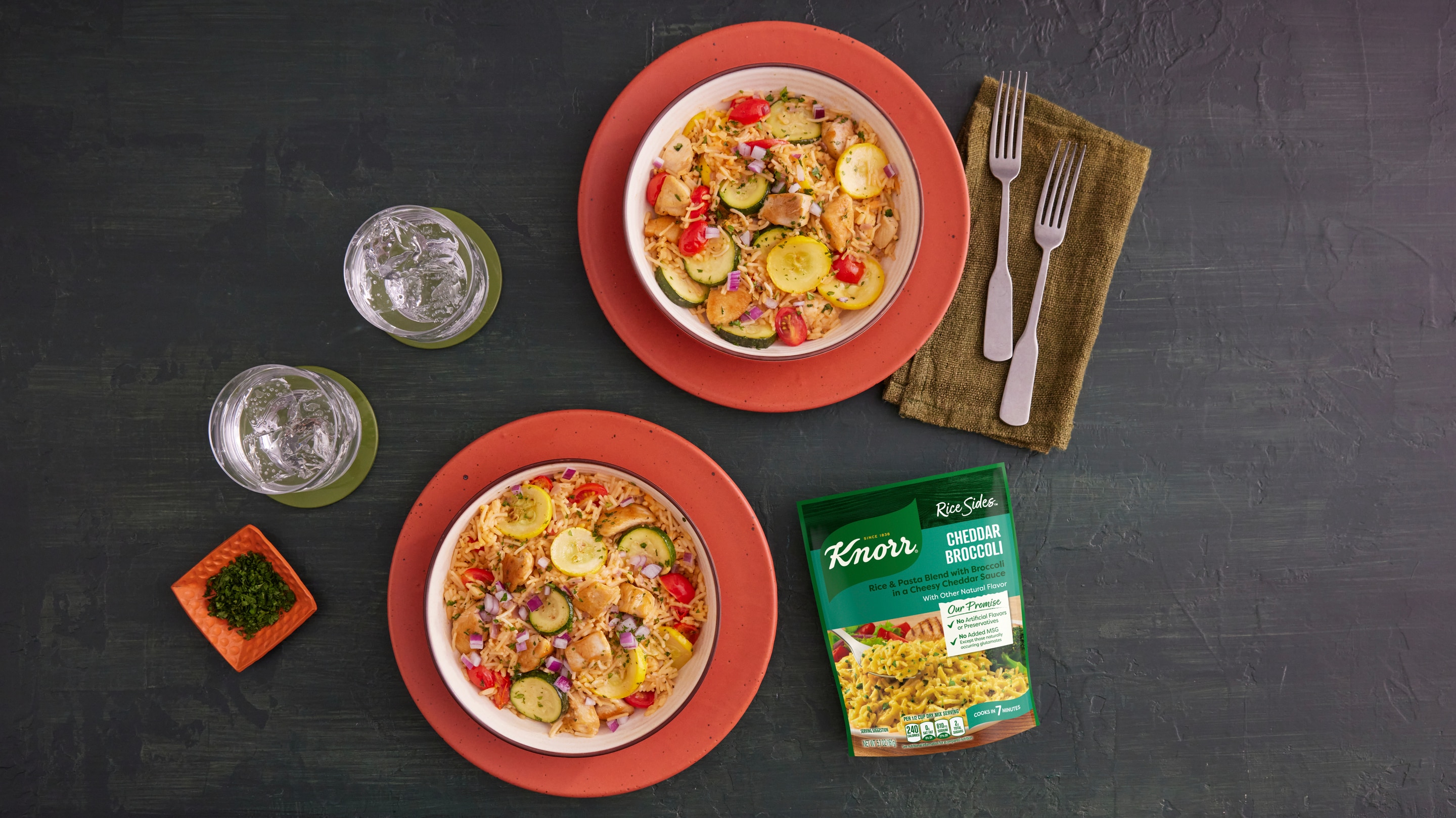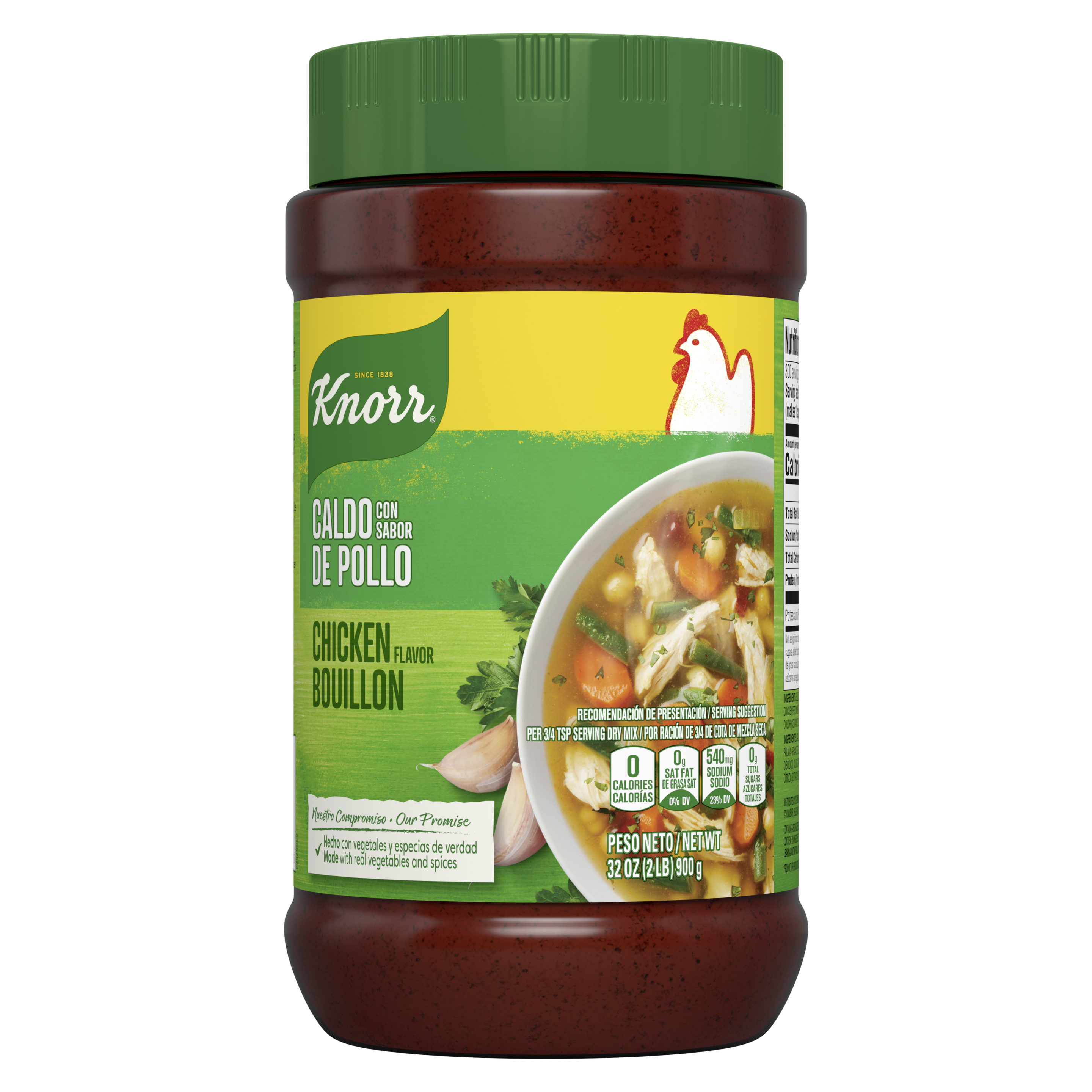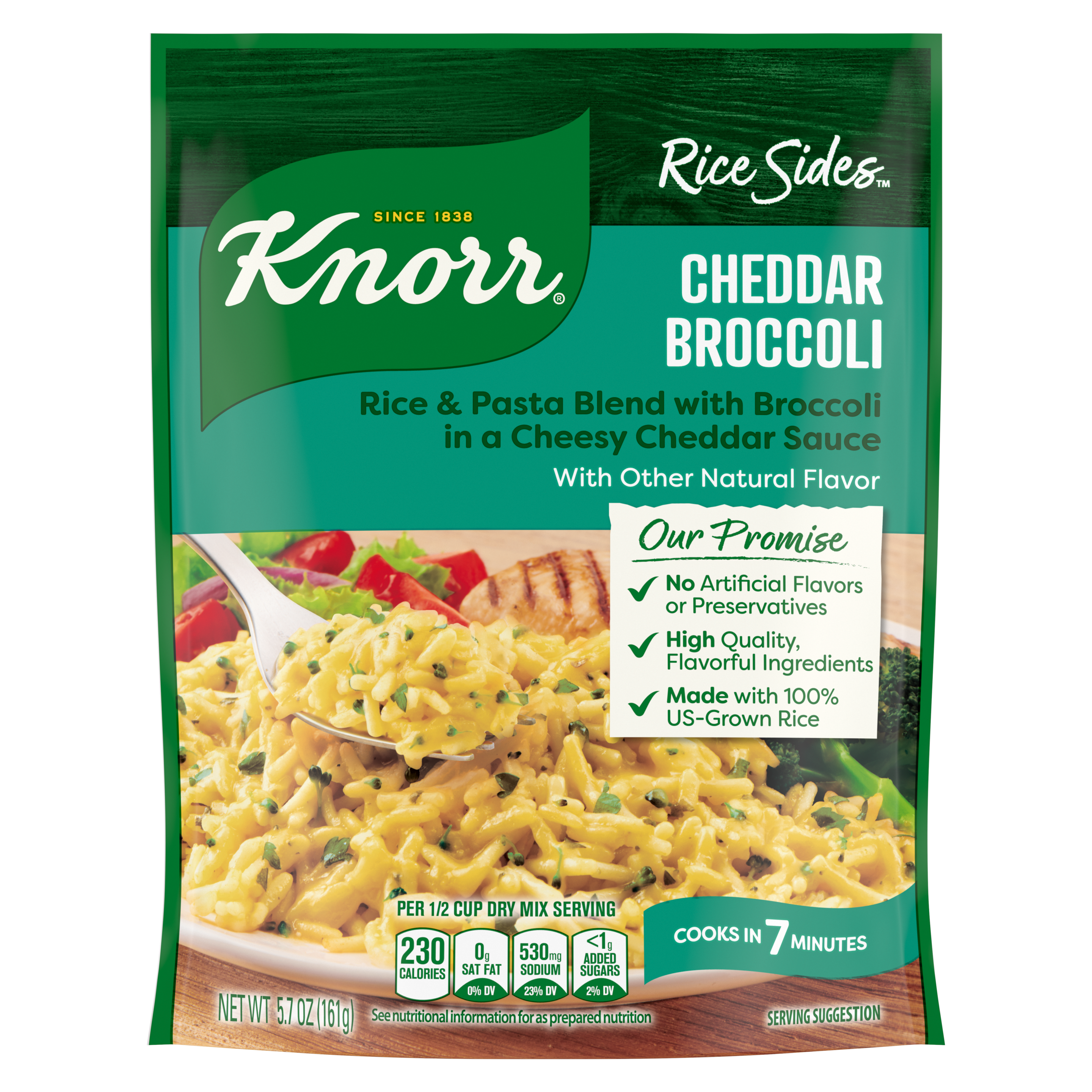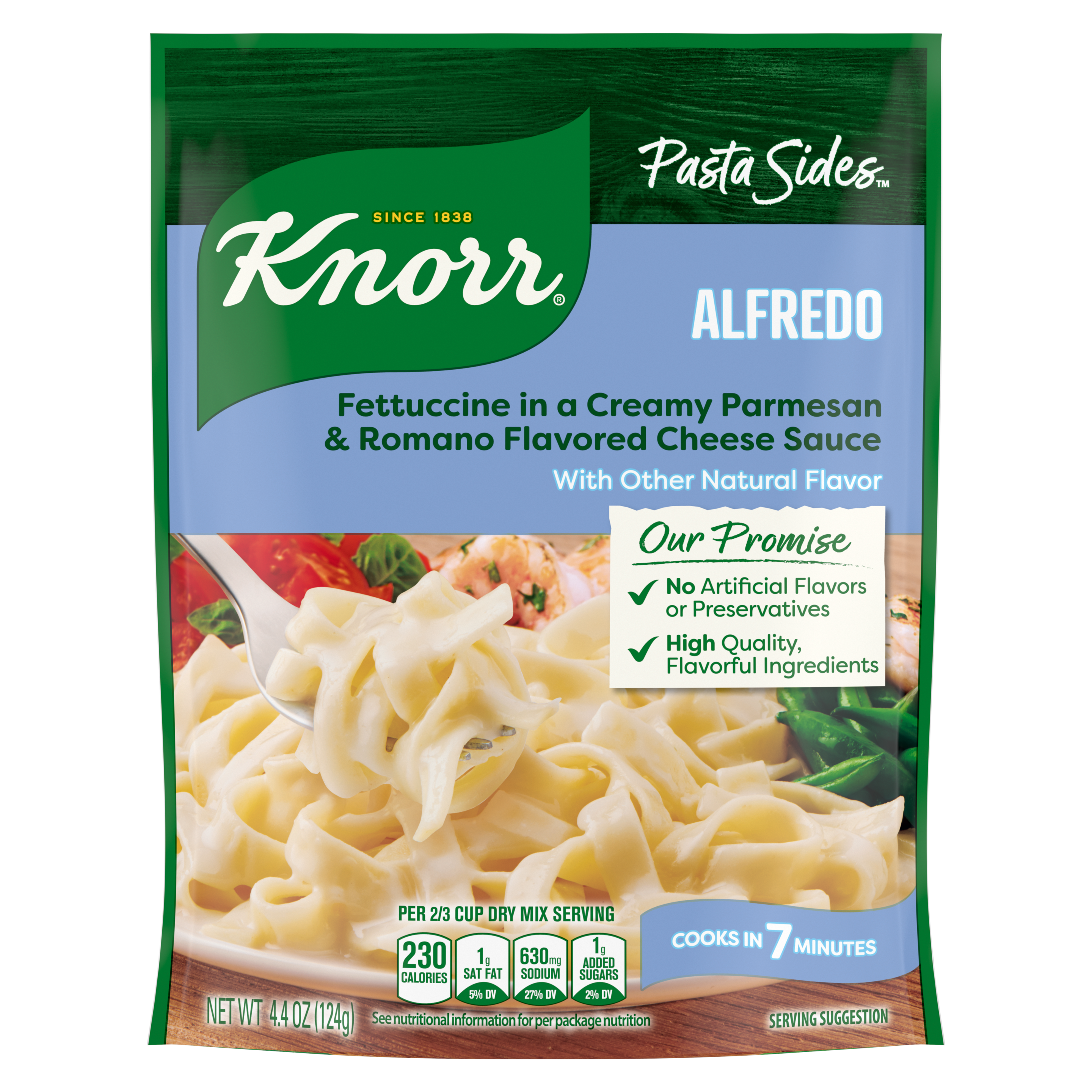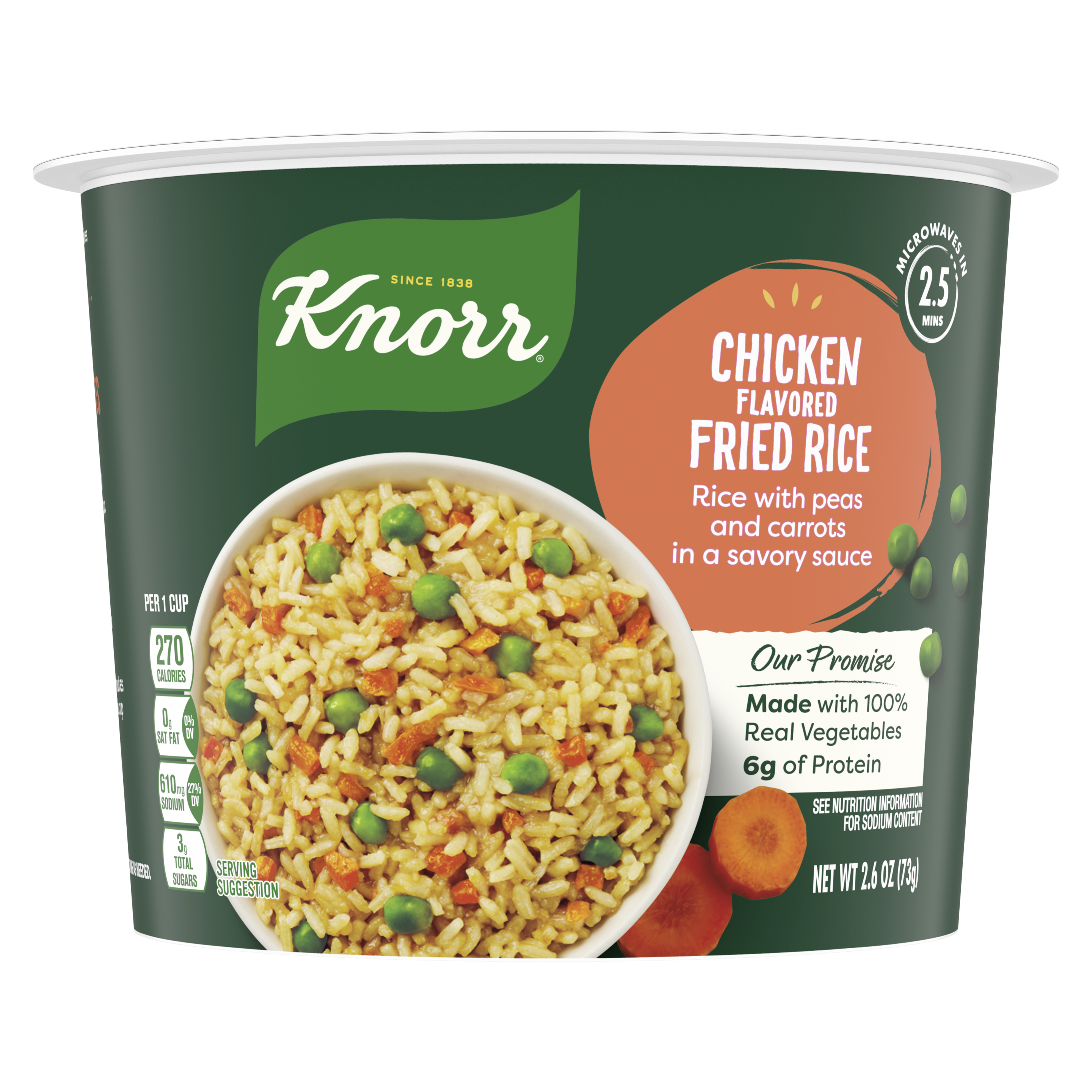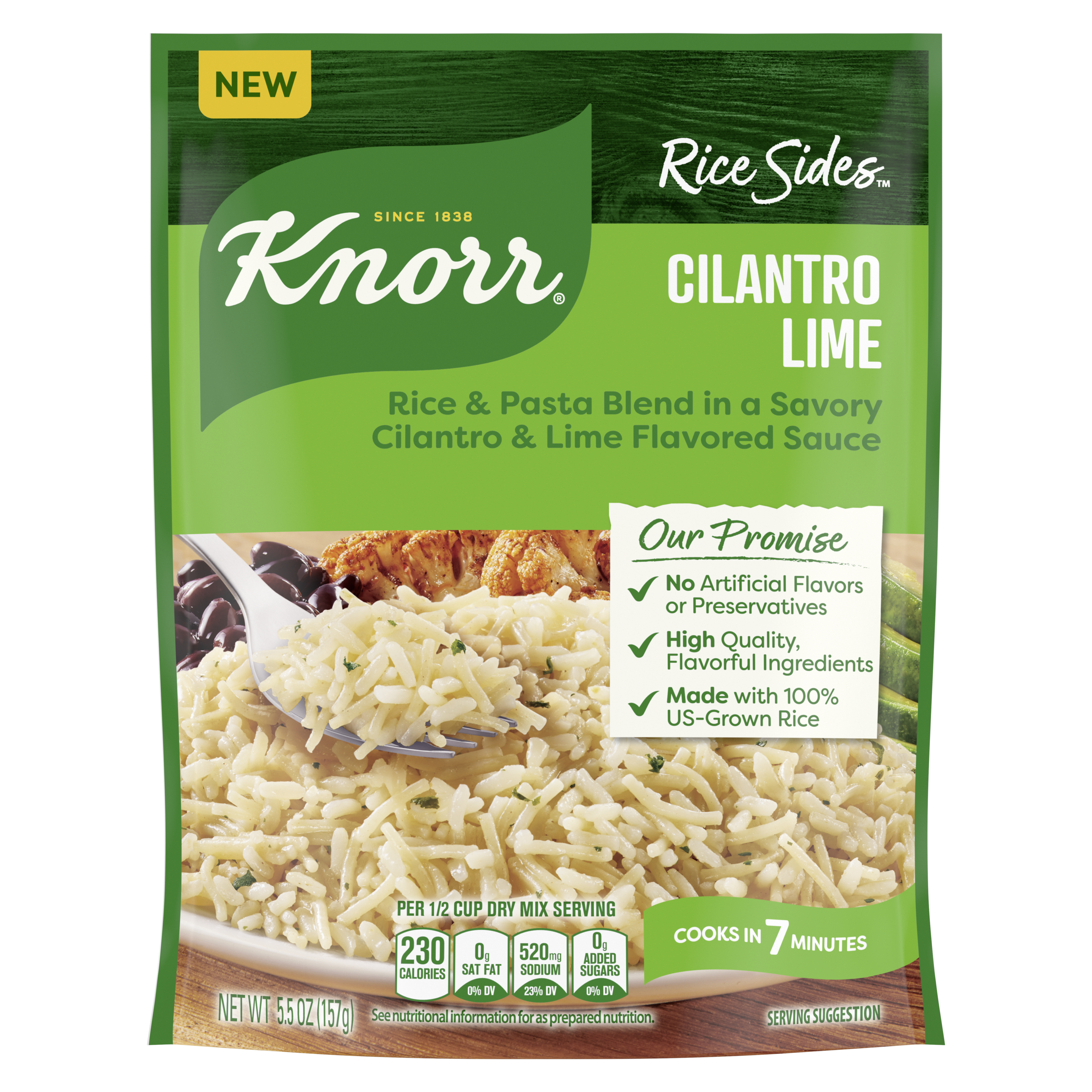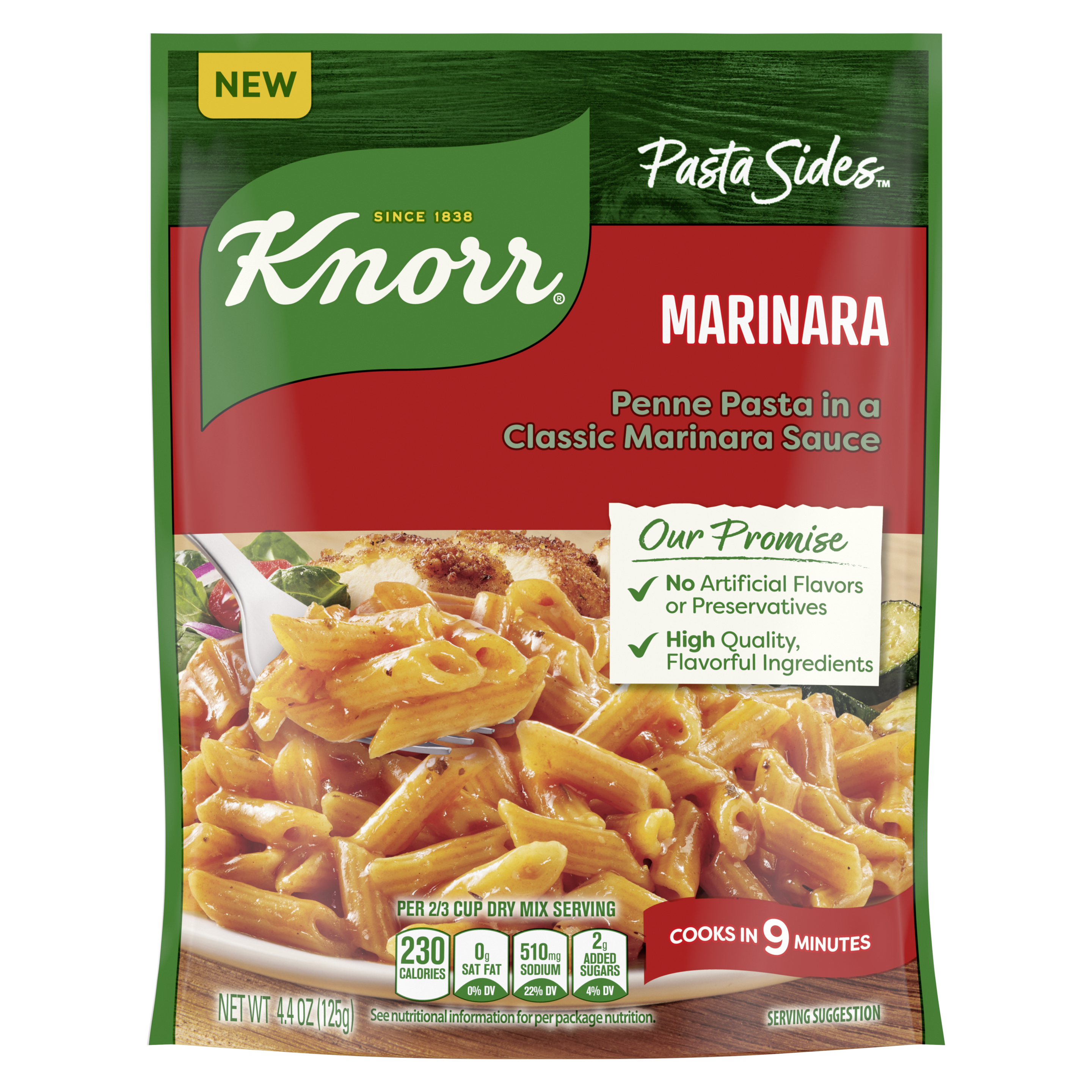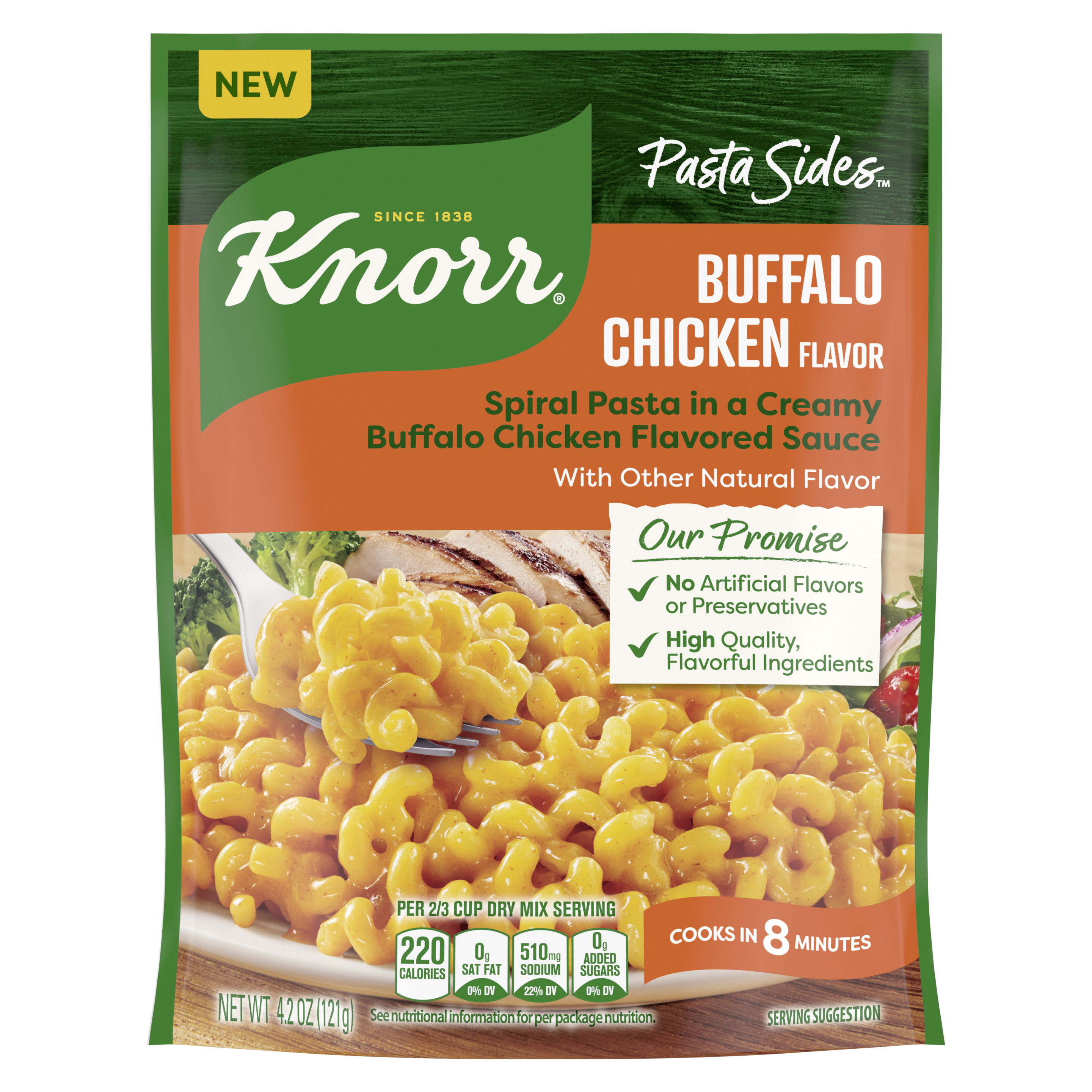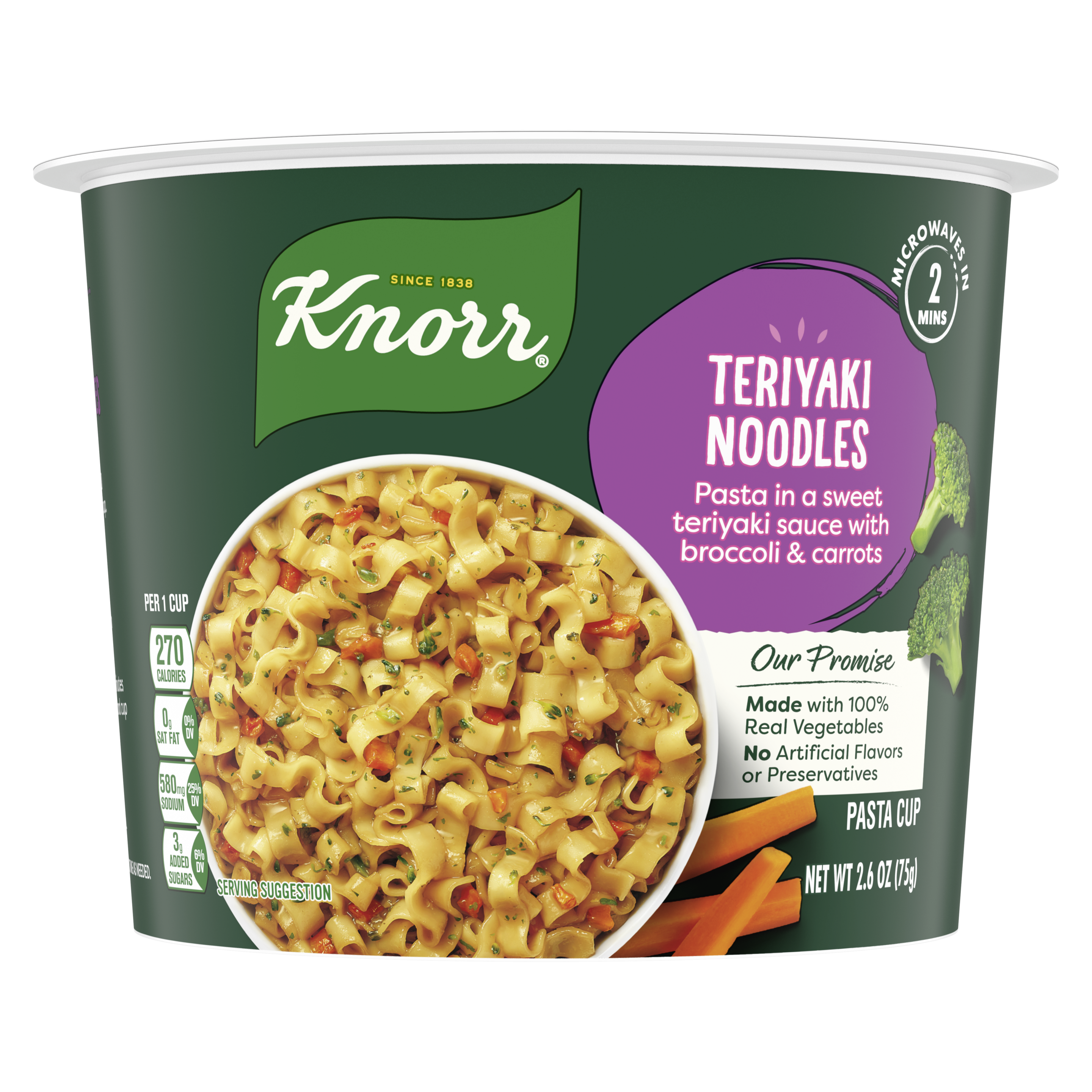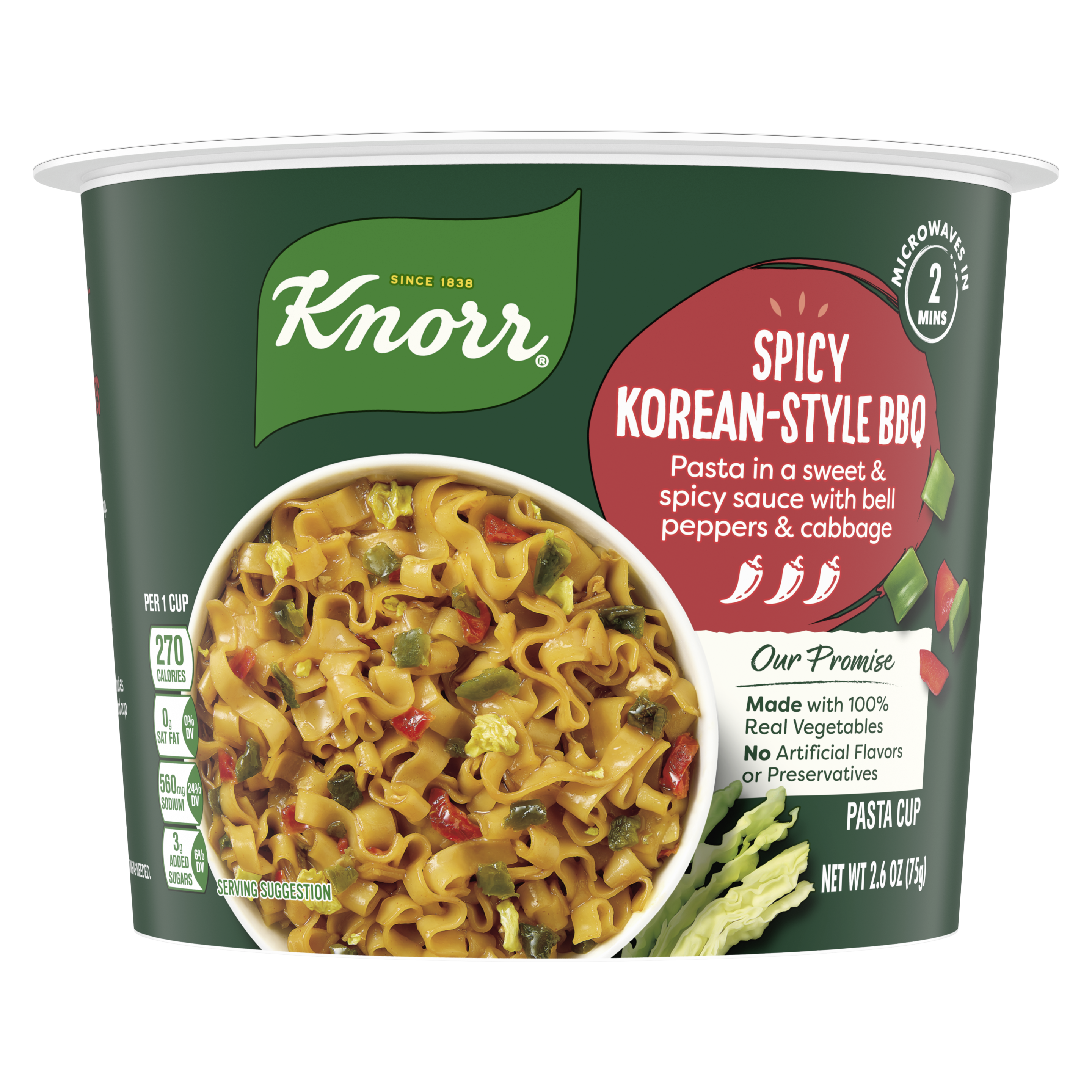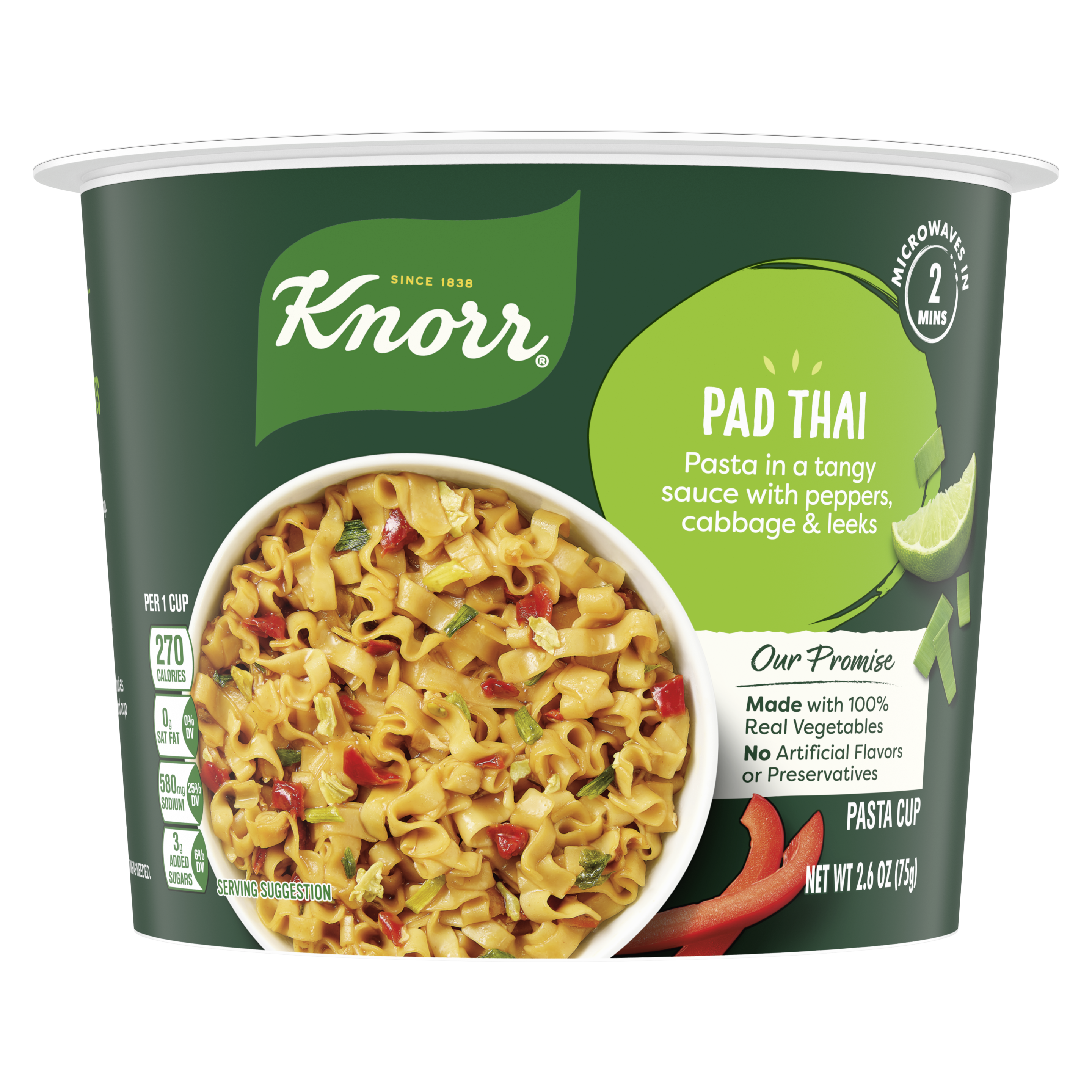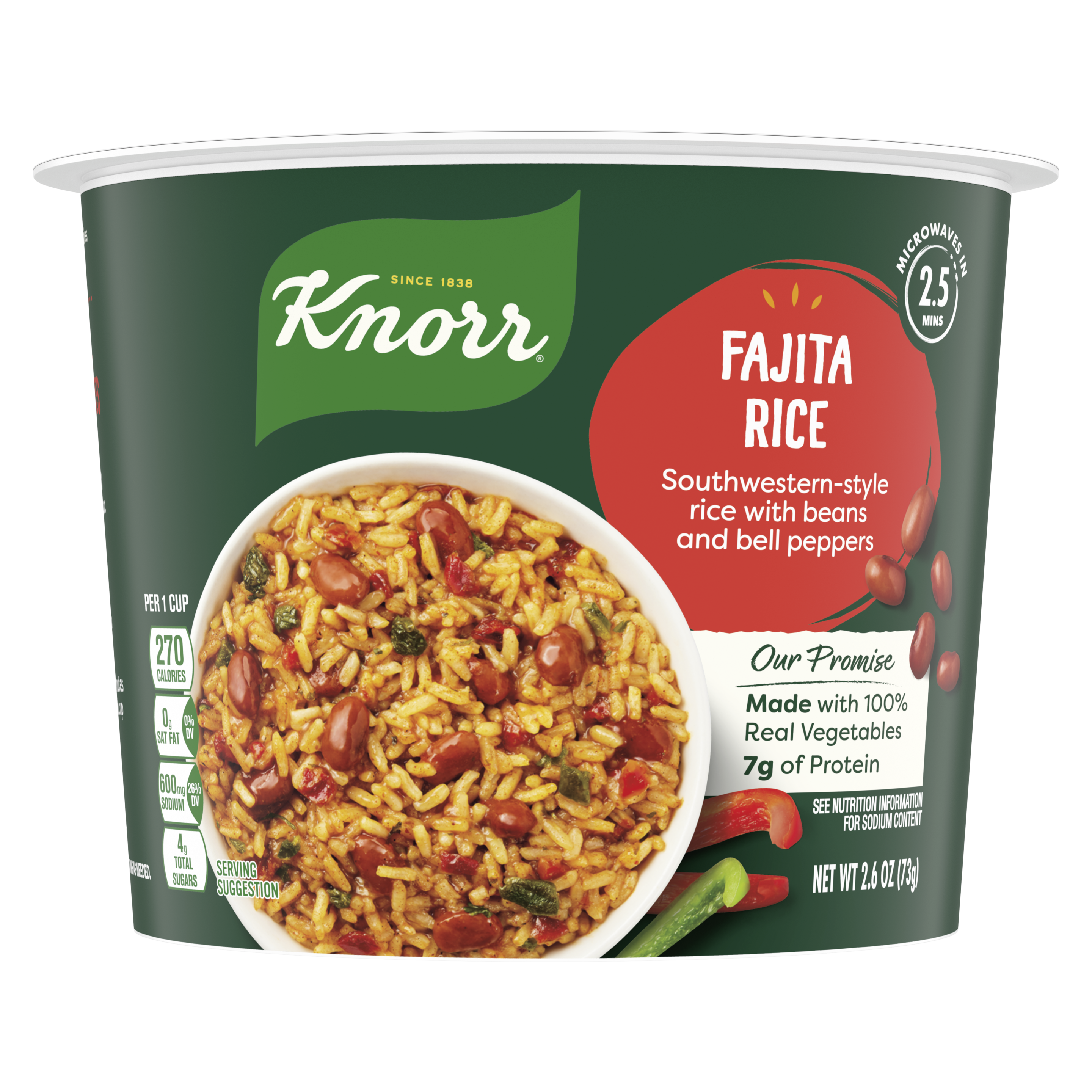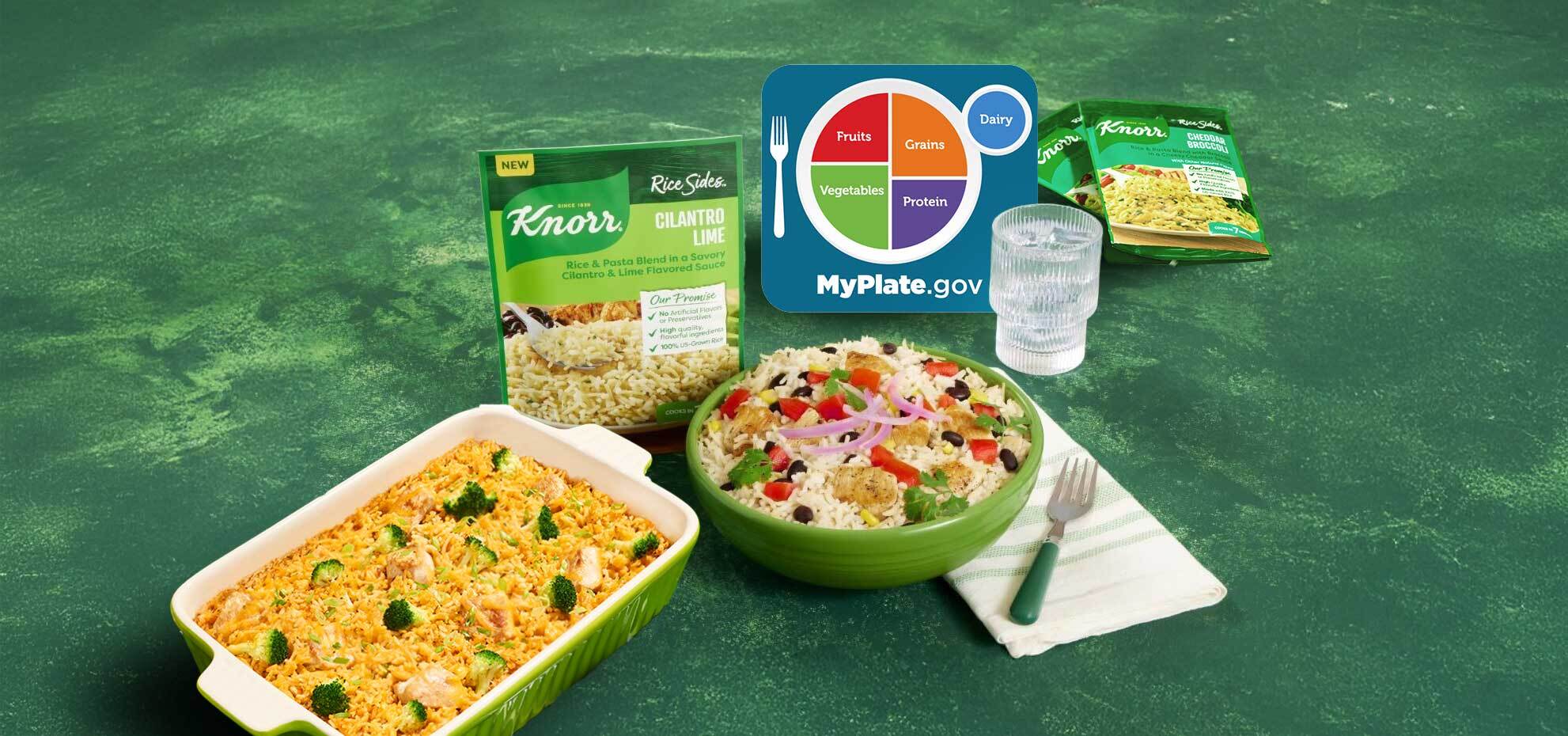Skip to:
Stop craving. Start cooking.
Today I'm looking for...
Our latest
recipes

Knorr Chicken Ramen Noodle Soup
SERVES: 8 TOTAL TIME: 25min
Good food can be as delicious as fast food. With Chicken Ramen Noodle Soup, eating better just got tastier!
- 2 Tbsp. PLUS 2 tsp. vegetable oil, divided
- 1 lb. boneless, skinless chicken breasts, cut into bite-size chunks
- 6 ounces mushrooms preferably shiitake mushroom caps, sliced
- 2/3 cup diagonally sliced carrots
- 6 large green onions, sliced, whites and greens separated
- 2 Tbsp. grated fresh ginger
- 2 Tbsp. minced garlic
- 8 cups water
- 1 1/2 Tbsp. Knorr® Chicken flavor Bouillon
- 6 ounces ramen noodles, (Chinese noodles)
- 4 ounces bok choy, sliced, about 1 1/2 cups
- Heat 2 Tbsp. oil in large pot over medium-high heat and cook chicken, turning occasionally, until browned, about 4 minutes. Remove to plate and set aside.
- Heat remaining 2 tsp. oil in same pot over medium heat and cook mushrooms, carrots, white part of onions, ginger and garlic, stirring frequently, 3 minutes or until vegetables soften slightly. Add water and Knorr® Chicken flavor Bouillon and bring to a boil.
- Stir in ramen noodles and bok choy and simmer 2 minutes, breaking up ramen noodles with a spoon. Stir in cooked chicken and any juices and simmer 1 minute or until noodles and vegetables are tender and chicken is thoroughly cooked.
- Spoon into bowls and sprinkle with green onions.
- Chef's Tip: Garnish with your favorite toppings, like soft-boiled eggs, toasted sesame seeds and crispy onions if desired.
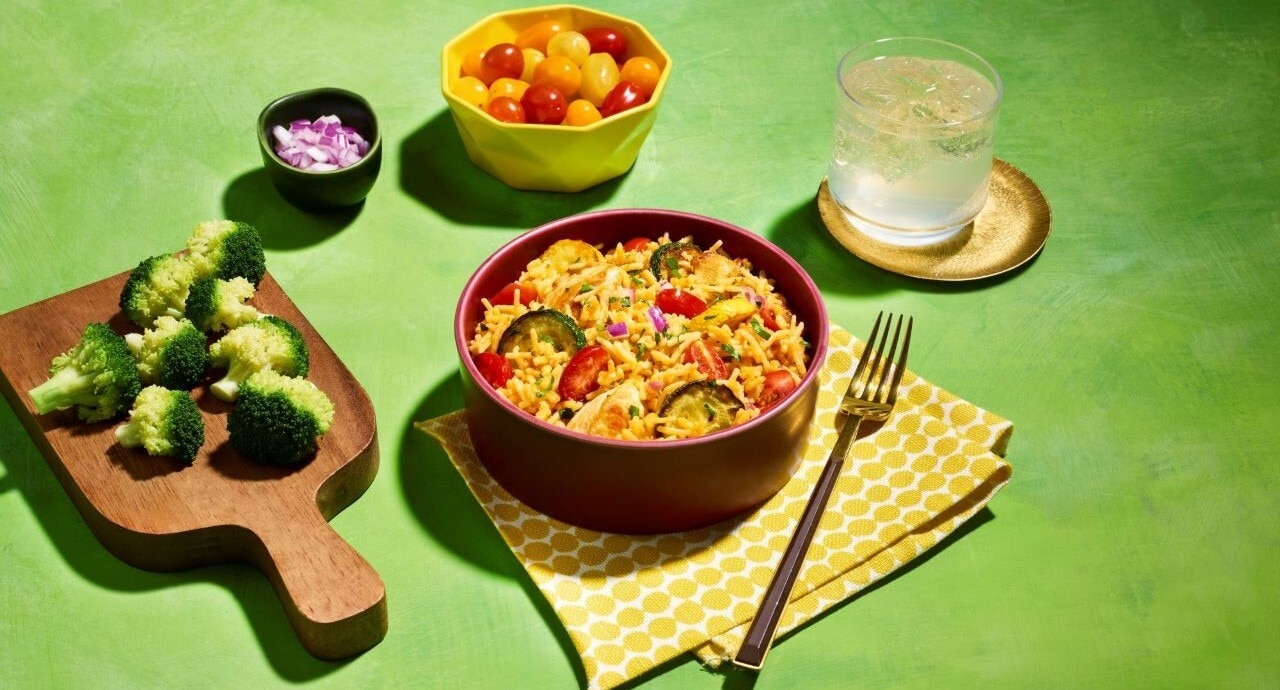
Chicken Cheddar Broccoli Bowl
SERVES: 4 TOTAL TIME: 17min
Create a veggie-filled meal bursting with color with red onion, yellow squash, green zucchini, and red tomatoes for under $4 per serving.
- 1 package Knorr® Rice Sides™ - Cheddar Broccoli
- 1 Tbsp. vegetable oil
- 1 lb. boneless, skinless chicken breasts
- 1/2 large red onion
- 1 medium zucchini
- 1 medium yellow squash
- 1 cup halved grape tomatoes
- 1 Tbsp. chopped fresh parsley leaves
- Cook Knorr® Rice Sides™ - Cheddar Broccoli in 2-quart saucepan according to package directions.
- While Rice is cooking, heat oil in large skillet over high heat. Cut chicken into bite-sized pieces and slice red onion, reserving 1 Tbsp. chopped red onion for garnish. Add chicken and sliced onion to skillet and cook 5 minutes, stirring occasionally, until chicken is thoroughly cooked. Remove from skillet.
- While chicken is cooking, slice zucchini and squash. Add to same skillet and cook, stirring occasionally, until lightly browned about 3 minutes. Stir in halved grape tomatoes.
- Return chicken to skillet and combine with squashes and cooked Rice. Garnish with reserved chopped red onion and chopped parsley.
- Tip: For a plant-based option, try substituting the chicken with firm tofu. Simply drain, thoroughly pat dry and cut into 1-inch cubes. Then cook with the red onion until lightly browned.
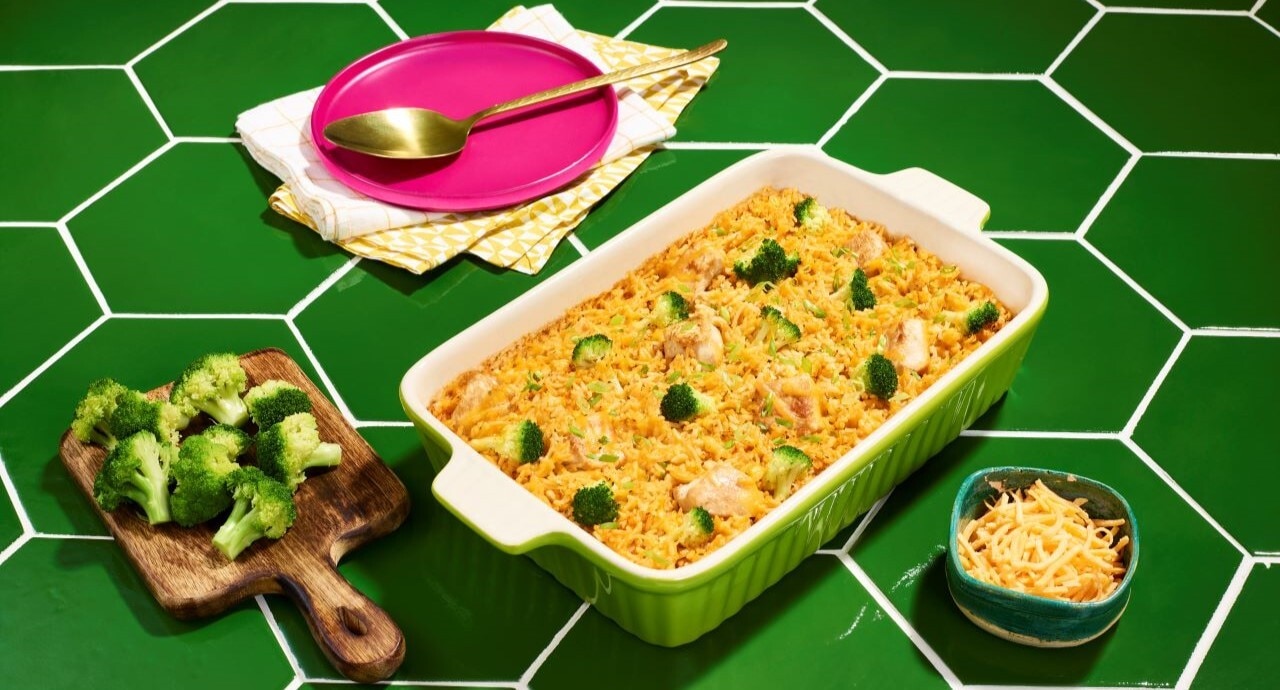
Cheesy Chicken Broccoli Bake
SERVES: 6 TOTAL TIME: 45min
This cheesy casserole bake is sure to be a family favorite. Ready in just 30 minutes, our Cheesy Chicken Broccoli Bake is packed with protein and delicious flavor!
- 1 lb. boneless, skinless chicken breasts, cut into bite-size pieces
- 2 packages Knorr® Rice Sides™ - Cheddar Broccoli
- 3 1/2 cups water
- 1/2 cup lowfat milk
- 1 bag (12 oz.) frozen broccoli florets
- 1/4 cup shredded reduced fat cheddar cheese
- 2 Packets 2 Easy Steps!
- Preheat oven to 425°. Toss chicken and Knorr® Rice Sides™ - Cheddar Broccoli in 13 x 9-in. baking dish. Stir in water and milk. Bake 20 minutes.
- Remove baking dish from oven and stir in broccoli, then sprinkle with cheese. Bake 10 minutes until rice is tender and chicken is thoroughly cooked. Remove from oven and let cool 5 minutes before serving. Garnish with sliced green onions if desired.
- Tip: For a little crunch, top cheese with some breadcrumbs.
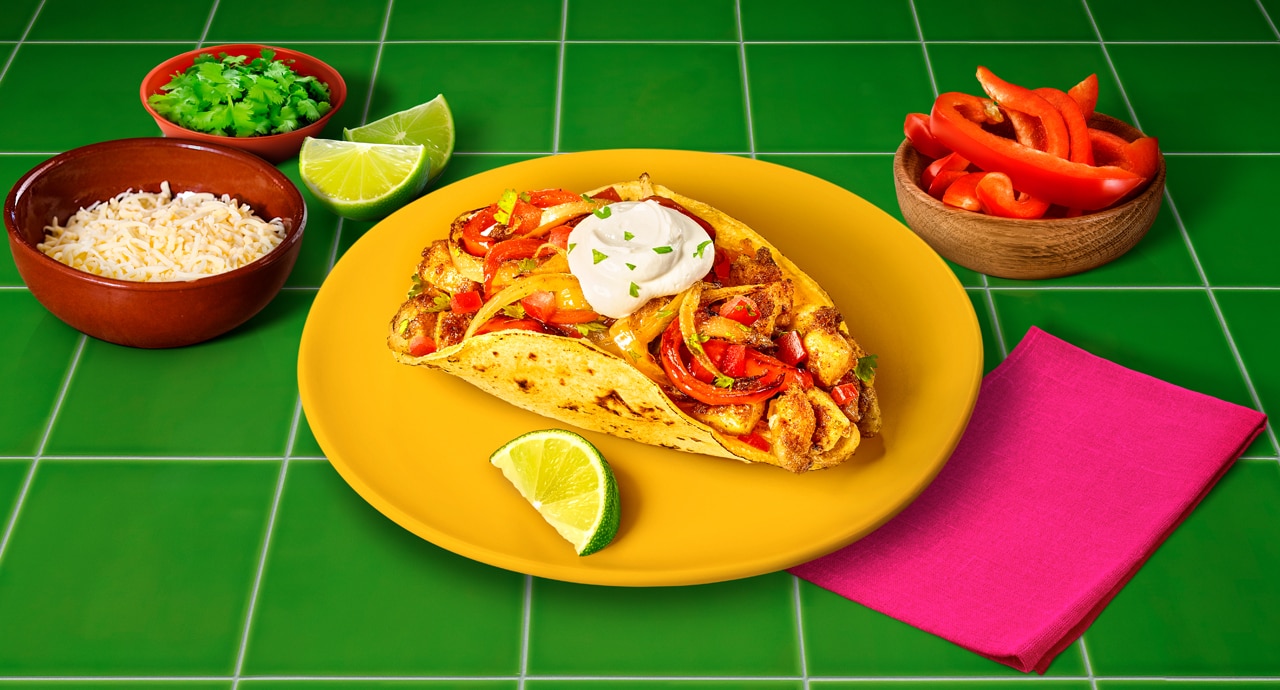
Chicken Tacos
SERVES: 4 TOTAL TIME: 20min
Cook up Knorr's delicious Chicken Tacos made with a few simple ingredients. A recipe that's quick, easy to make on a budget, and nutritious to eat!
- 2 Tbsp. olive oil
- 1 large green bell pepper
- 1 medium yellow onion
- 1 lb. boneless, skinless chicken thighs
- 2 tsp. Knorr® Chicken flavor Bouillon or 1 Knorr® Chicken flavor Bouillon Cube, crumbled
- 1 tsp. ground cumin
- 1 tomato
- 1/4 bunch fresh cilantro
- 8 corn tortillas
- 5 Tbsp. sour cream
- Heat olive oil in large nonstick skillet over high heat. Meanwhile, quickly slice green pepper and onion and cut chicken into bite-sized pieces. Add all to skillet; sprinkle with Knorr® Chicken flavor Bouillon and cumin and cook, stirring occasionally, until vegetables are tender and chicken is thoroughly cooked about 6 minutes.
- While vegetables and chicken are cooking, dice tomato, coarsely chop cilantro and warm tortillas.
- Evenly spoon cooked chicken and vegetables onto tortillas and evenly top with sour cream, tomato and cilantro. Serve with fresh lime or hot sauce, if desired.
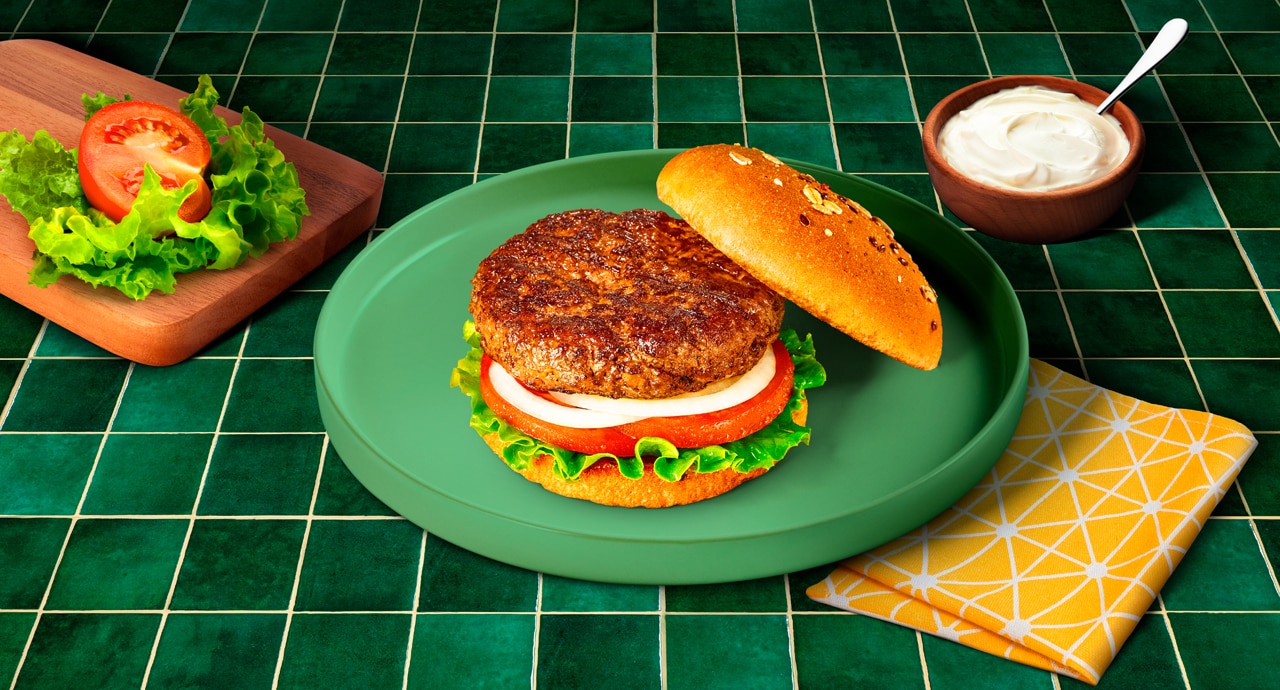
Perfect Classic Burger
SERVES: 4 TOTAL TIME: 15min
This classic burger recipe is simple, delicious and perfect for cooking on a budget. Our juicy recipe costs less than $4 per serving!
- 1 lb. extra lean ground beef
- 1/2 cup finely chopped yellow onion
- 2 tsp. Knorr® Beef flavor Bouillon
- 1 Tbsp. oil
- 4 Multigrain thin buns or Sprouted Multigrain Buns
- 8 slices tomato
- 8 pieces lettuce
- Combine ground beef, onion and Knorr® Beef flavor Bouillon in medium bowl until well blended. Shape into 4 patties.
- Heat oil in large nonstick skillet over medium-high heat and cook burgers 4 minutes. Turn burgers and cook 4 to 5 minutes or until desired doneness.
- Assemble burgers on buns with lettuce and tomatoes.
- Tip: These delicious burgers can also be grilled.
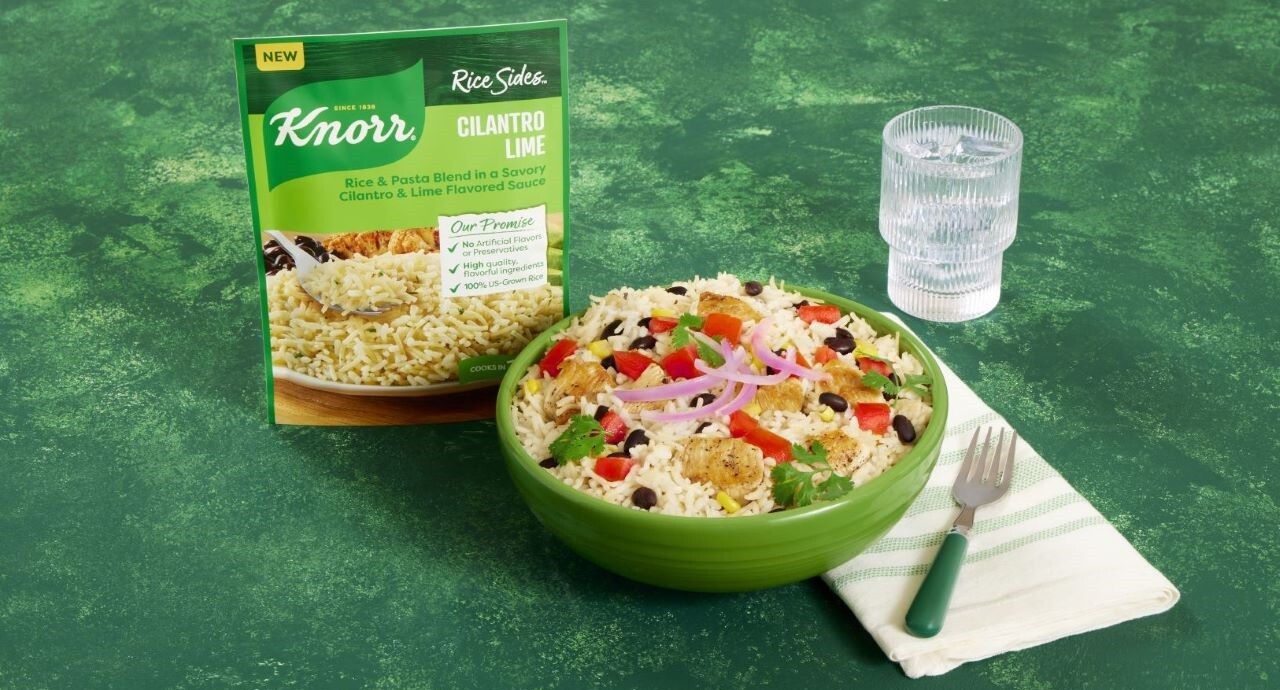
Cilantro Chicken Burrito Bowl
SERVES: 6 TOTAL TIME: 27min
This burrito bowl recipe starts with flavor packed cilantro lime rice, juicy garlic chicken, black beans, corn, and pickled red onions. This recipe will become a dinner time staple at your house!
Quick Pickled Onions
- 1 tbsp fresh lime juice or vinegar
- 1/2 cup thinly sliced red onion, rinsed
Burrito Bowl
- 2 tbsps olive oil, divided
- 1 lb boneless skinless chicken breast, cut into bite-size pieces
- 1 clove garlic, chopped
- 8 ounces canned corn no salt added, rinsed and drained
- 3 1/2 cups water
- 2 packages Knorr Rice Sides - Cilantro Lime
- 2 large tomatoes, chopped
- 15.5 ounces no salt added black beans, rinsed and drained
- For QUICK PICKLED ONIONS, combine onion and vinegar in small microwave-safe bowl. Microwave at HIGH for 30 seconds. Stir and set aside.
- For BURRITO BOWL, heat 1 Tbsp. oil in large nonstick skillet over medium-high heat. Season chicken with salt and pepper if you'd like. Add chicken to skillet and cook, stirring occasionally until chicken is thoroughly cooked, about 5 minutes. Add garlic; cook, stirring, until fragrant, about 30 seconds. Remove all from skillet and set aside.
- Heat remaining oil in same skillet and cook corn and black beans for about 2 minutes or until lightly colored. Add water and Knorr Cilantro Lime Rice Sides and bring to a boil; reduce heat and cook, covered 7 minutes.
- Stir in chicken. Spoon into bowls and garnish with chopped tomatoes, and pickled red onions; now it's delicious. Dig in!
Top Favorite Knorr Products
Elevate your cooking with Knorr's top favorites! Discover the rich flavor of Knorr's Chicken Bouillon, perfect for enhancing your favorite soups, stews, and marinades. Don't forget to try our Cheddar Broccoli Rice Sides, a deliciously creamy and savory side dish that pairs perfectly with any meal.
New Knorr Products
Discover the delicious convenience of Knorr's new range of products! Our pasta and rice cups are designed for on-the-go enjoyment, offering a quick and satisfying meal that you can prepare in minutes, perfect for busy days. Our pasta and rice sides are ideal for home cooking, adding a delightful touch to any meal with their rich flavors and easy preparation.
Want tailored recipes, tips
and tricks, and product news?
Tips & Tricks

Looking for inspiration?
Sign up for exclusive product news and recipes so that you can make Knorr Taste Combos at home (and get $1 off Knorr products!)





